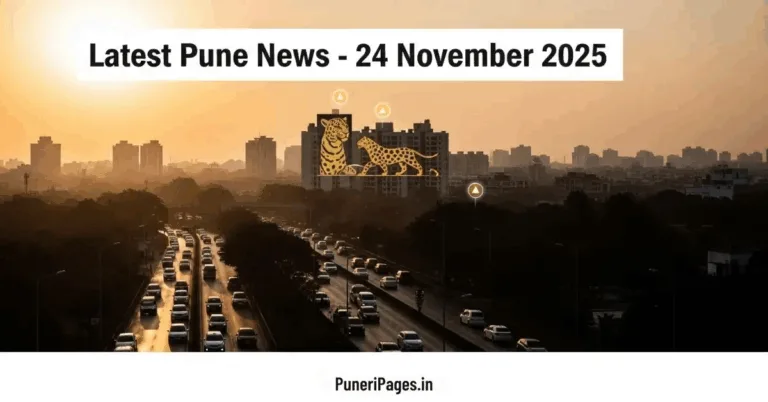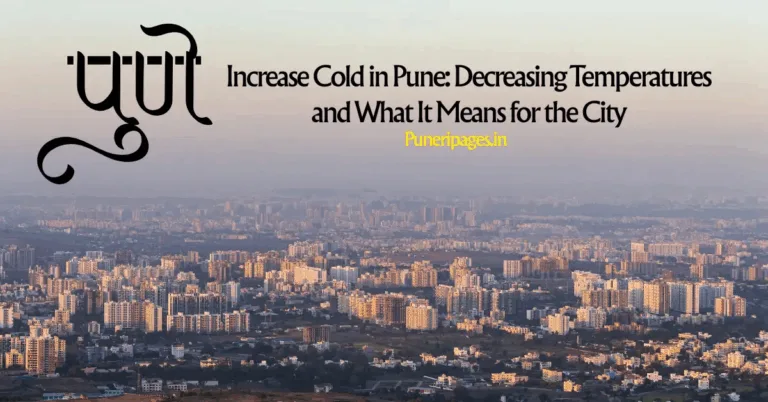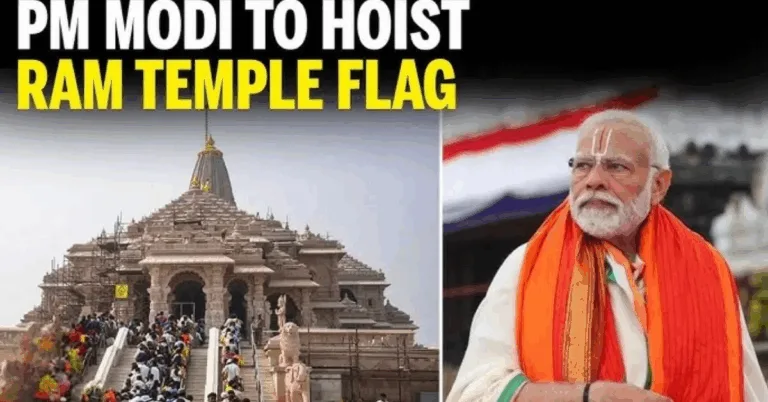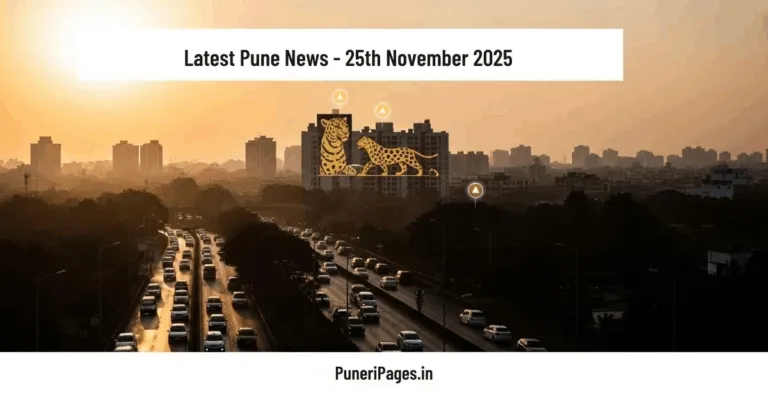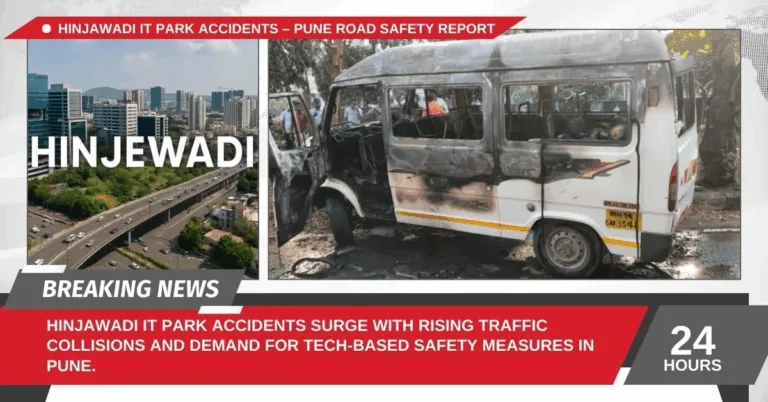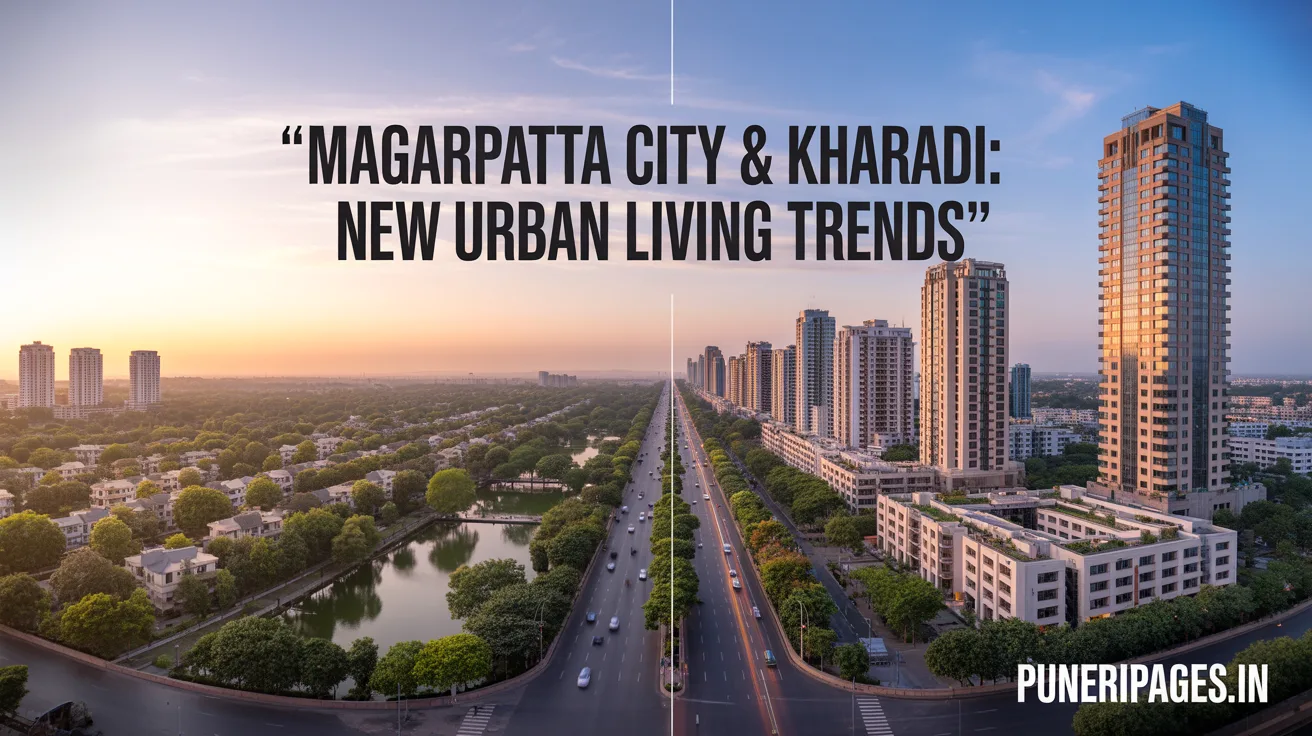
Cover image for the article on puneripages.in showcasing Magarpatta City’s sustainable township design alongside Kharadi’s high-growth IT corridor
Magarpatta City and Kharadi represent two pivotal axes in the contemporary transformation of Pune’s urban topography, serving as exemplars of ecological sustainability and techno-centric urban development respectively. Magarpatta City, envisioned as a self-reliant urban township, seamlessly integrates green urbanism, participatory governance, and infrastructural resilience. The project, initiated in the early 2000s, traces its ideological and operational origins to an agrarian cooperative reform—transforming farmland into a well-planned, citizen-owned township model. This milestone in participatory planning represents a turning point in inclusive urbanism in India.
Kharadi, on the other hand, emerged from relative obscurity in the late 1990s but experienced exponential growth following the strategic implementation of the IT/ITES policy by the Maharashtra state government. Catalyzed by the establishment of the EON Free Zone and subsequent infrastructure upgrades, Kharadi has evolved into a nodal point for Pune’s eastern expansion and is now classified as an innovation-led economic zone. Government incentives, coupled with robust FDI inflows and targeted real estate interventions, have played a pivotal role in reconfiguring Kharadi’s urban character.
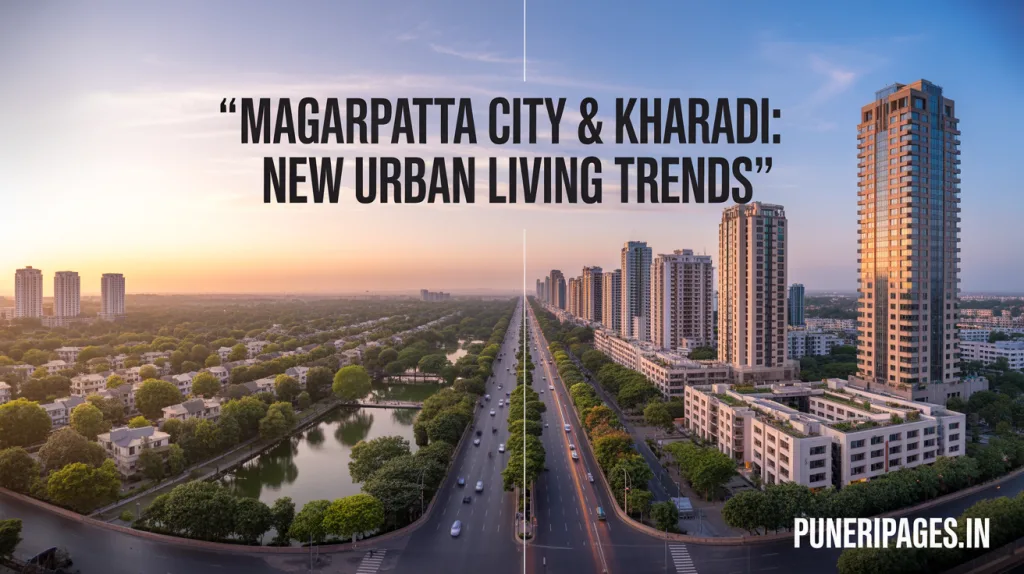
This comprehensive examination synthesizes the planning ethos, socio-economic ramifications, spatial dynamics, and institutional frameworks that underpin the development trajectories of both these urban nuclei, offering critical insights into Pune’s transition towards a polycentric metropolitan identity. Magarpatta City and Kharadi represent two pivotal axes in the contemporary transformation of Pune’s urban topography, serving as exemplars of ecological sustainability and techno-centric urban development respectively. Magarpatta City, envisioned as a self-reliant urban township, seamlessly integrates green urbanism, participatory governance, and infrastructural resilience. Conversely, Kharadi, emerging from its peripheral obscurity, has metamorphosed into a magnet for digital economies and real estate speculation, catalyzed by its strategic connectivity and IT corridor investments. This comprehensive examination synthesizes the planning ethos, socio-economic ramifications, spatial dynamics, and institutional frameworks that underpin the development trajectories of both these urban nuclei, offering critical insights into Pune’s transition towards a polycentric metropolitan identity.
Table of Contents
1. Magarpatta City: A Model for Eco-Integrated Township Development 🌳🏙️

1.1 Conceptual Genesis and Governance Framework
Emerging in the early 2000s as a groundbreaking paradigm in participatory urbanism, Magarpatta City was the brainchild of a visionary consortium of local farmers led by the Patil family. Spanning approximately 430 acres of erstwhile agricultural terrain, its development was rooted in cooperative land pooling models. These ensured the continued ownership and financial participation of the original landowners, thereby setting a precedent in inclusive and just urban development .
1.2 Ecological Infrastructure and Sustainability Indices 🌿🌍
Magarpatta City is internationally acclaimed for its environmental stewardship and urban sustainability. Over 30% of its land area is allocated to green infrastructure—including sprawling botanical gardens, biodiversity belts, and watershed preservation systems. The township employs passive solar architecture, rooftop solar photovoltaics, automated solid waste segregation systems, and decentralized wastewater treatment plants. These integrated sustainability metrics have earned it accolades as a prototype for ecologically responsible urban planning (magarpattacity.com).
1.3 Spatial Morphology: Residential and Commercial Synergies
Housing options span a broad spectrum—from budget-conscious 2-BHK flats to expansive luxury villas—catering to a heterogeneous demographic. Simultaneously, the commercial zones comprise state-of-the-art IT parks, boutique retail strips, and co-working hubs. Notable developments such as Nyati Evolve and Balasai Elina Premium highlight the architectural ingenuity and real estate demand, with price appreciation trends reflecting robust investor confidence.
1.4 Social Capital and Civic Institutions
Beyond its physical infrastructure, Magarpatta’s social architecture is meticulously curated. Educational institutions, such as Vidya Pratishthan’s schools, healthcare facilities like Noble Hospital, and cultural venues including the Aditi Garden amphitheater, collectively foster a sense of civic belonging and community resilience. Participatory governance structures enable residents to partake in neighborhood-level decision-making, strengthening democratic urban stewardship.
2. Kharadi: From Peripheral Suburb to Urban Innovation Cluster 🚀
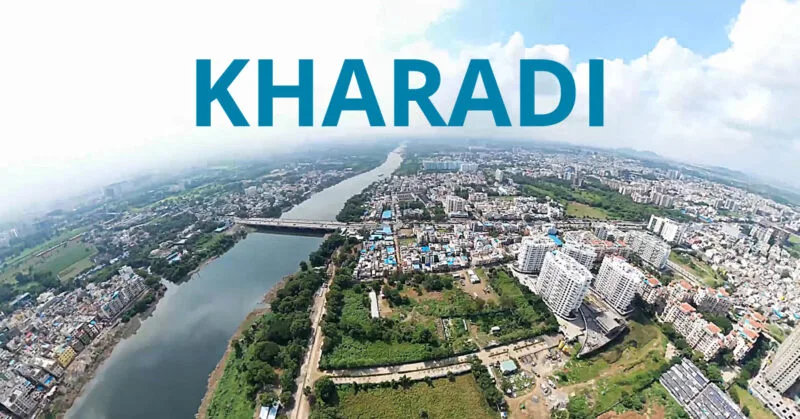
2.1 Technological Catalysis and Economic Intensification
Kharadi’s urban ascendancy is a testament to strategic sectoral alignment and policy-driven IT corridor designation. Following the inauguration of the EON IT Park, Kharadi rapidly attracted global tech firms and domestic startups alike. This has generated sustained demand for skilled professionals, precipitating a population influx, economic diversification, and real estate boom .
2.2 Urban Planning Vision and Mobility Integration
Spanning over 2,800 acres, the Kharadi Smart City Vision Plan is underpinned by principles of equitable mobility and infrastructural fluidity. Its layout champions Transit-Oriented Development (TOD), with interconnected metro stations, BRT corridors, and pedestrian-friendly boulevards. This urban planning strategy enhances accessibility, reduces vehicular dependency, and supports inclusive growth.
2.3 Real Estate Dynamics and Capital Inflows
Kharadi’s real estate canvas has evolved into a magnet for both institutional and individual investors. With residential inventory ranging from ₹50 lakh 1-BHKs to ₹2 crore 3-BHK luxury condominiums, the area caters to diverse income groups. Proximity to employment hubs fuels high rental demand, with yields stabilizing at an impressive 8–10% annually, making it a preferred locale for long-term capital allocation.
3. Comparative Analysis: Divergent Models of Urbanism
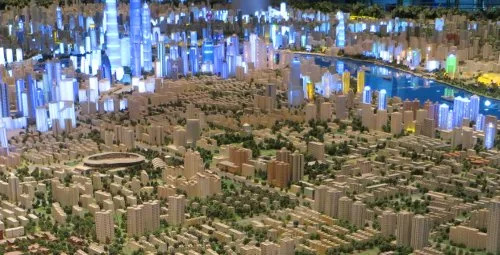
3.1 Contrasting Developmental Ethos 🤔
Magarpatta is emblematic of an endogenous, community-driven model, foregrounding landholder empowerment and ecological balance. In stark contrast, Kharadi’s trajectory is shaped by external capital inflows, private-sector dynamism, and technology-enabled urban growth. Nonetheless, both demonstrate commitments to integrated land use, green corridors, and inclusive amenities.
3.2 Trend Trajectories and Systemic Constraints 📉
The urban trajectories of Magarpatta City and Kharadi signify more than isolated development arcs—they exemplify the evolving dynamics of post-liberalization urban India. Magarpatta continues to deepen its commitment to sustainable living by incorporating digitized infrastructure, expanding smart grids, and investing in low-carbon transit solutions. Concurrently, Kharadi is witnessing aggressive verticalization, underpinned by heightened FDI, the proliferation of co-living ecosystems, and enhanced digital connectivity facilitated by upcoming 5G corridors.
Yet, both urban centers face persistent systemic constraints. Aquifer depletion, accentuated by erratic monsoon patterns and over-extraction, undermines long-term water security. According to a 2024 report by the Maharashtra Groundwater Authority, water table levels in Kharadi have dropped by 15% over five years. Furthermore, ambient air quality indices reveal that particulate matter in Kharadi frequently breaches safe thresholds, posing public health concerns. In Magarpatta, the challenge of socio-spatial homogenization raises questions about inclusivity, particularly as real estate prices outpace income growth for middle-income groups.
Experts such as Dr. Shreya Kulkarni from the Centre for Urban Resilience Studies argue that these stressors must be interpreted through a resilience planning lens. She emphasizes adopting integrated urban water management frameworks and socially adaptive zoning policies to mediate class-based spatial exclusions. Similarly, urbanist Prof. Aditya Varde advocates for embedding performance-based design metrics—like energy per capita per sq km and green-to-built ratios—within regulatory masterplans to monitor ecological thresholds effectively.
In light of these constraints, there is a compelling need for cities like Pune to align future growth trajectories with internationally validated urban resilience frameworks such as the Rockefeller Foundation’s 100 Resilient Cities model or the UN-Habitat City Prosperity Index. Only by doing so can emerging hubs like Magarpatta and Kharadi sustain their growth while safeguarding ecological integrity and promoting equitable access to resources. Future trajectories include digitized infrastructure, socially cohesive zoning, and climate-responsive design. However, systemic challenges such as aquifer depletion, air quality degradation, and class-based spatial exclusions persist. Balancing economic acceleration with ecological and social equity remains an ongoing imperative.
3.3 Prescriptive Framework for Future Urbanism 📋🏗️🏞️
- Hydro-Ecological Resilience: Institutionalize rainwater harvesting, recharge trenches, and urban aquifer revitalization.
- Mobility Justice: Implement accessible BRTS, last-mile connectivity networks, and non-motorized transit options.
- Housing Equity: Promote inclusionary zoning, developer subsidies for affordable housing, and community land trusts.
4. Conclusion 🌆🔍📚
Key Learnings and Forward Pathways 📘🏙️🚀
In summation, Magarpatta City and Kharadi represent dichotomous yet complementary urban paradigms within Pune’s broader metropolitan fabric. While Magarpatta advances a model of participatory ecological urbanism, Kharadi champions technocratic urban intensification. Together, their developmental synergies underscore the multiplicity of models through which Indian cities can pursue sustainability, livability, and digital resilience. These dual narratives offer critical insights for urban planners, policy architects, and governance scholars seeking to craft inclusive and forward-looking urban futures.
To consolidate actionable insights, a set of synthesized policy recommendations and research inquiries is warranted:
- Policy Recommendations:
- Strengthen integrated urban water management and enforce groundwater monitoring in aquifer-stressed zones.
- Embed adaptive zoning frameworks into the Development Plan to mitigate socio-spatial exclusion.
- Mandate environmental performance metrics in building codes and incentivize compliance through tax benefits.
- Strengthen integrated urban water management and enforce groundwater monitoring in aquifer-stressed zones.
- Research Questions:
- How do participatory governance mechanisms influence long-term civic engagement and resilience outcomes in townships like Magarpatta?
- What are the latent vulnerabilities of tech-driven urban nodes like Kharadi in terms of economic monocultures and real estate volatility?
- To what extent can urban resilience indices inform masterplanning and regulatory review cycles?
- How do participatory governance mechanisms influence long-term civic engagement and resilience outcomes in townships like Magarpatta?
By addressing these strategic areas, urban stakeholders can align future growth paradigms with sustainable urbanism, equitable development, and infrastructure adaptability at scale. summation, Magarpatta City and Kharadi represent dichotomous yet complementary urban paradigms within Pune’s broader metropolitan fabric. While Magarpatta advances a model of participatory ecological urbanism, Kharadi champions technocratic urban intensification. Together, their developmental synergies underscore the multiplicity of models through which Indian cities can pursue sustainability, livability, and digital resilience. These dual narratives offer critical insights for urban planners, policy architects, and governance scholars seeking to craft inclusive and forward-looking urban futures.
5.FAQs 🙋♀️🏙️🙋♂️
Q1: What makes Magarpatta City unique compared to other Pune neighborhoods?
A: Magarpatta City stands out for its cooperative land development model, where original landowners retained ownership stakes. It’s also acclaimed for its eco-friendly planning, with over 30% green cover and smart infrastructure.
Q2: Why has Kharadi become a real estate and tech hotspot?
A: Kharadi’s rise is linked to the development of the EON IT Park and the Smart City Vision Plan, which attracted major IT firms, boosted infrastructure, and positioned it as a hub for innovation-led urban growth.
Q3: Which township is better for residential investment—Magarpatta or Kharadi?
A: Both townships offer excellent investment potential. Magarpatta appeals to those seeking integrated green living, while Kharadi is preferred by those drawn to tech-driven growth and higher rental yields.
Q4: How do these localities address environmental challenges?
A: Magarpatta leads in sustainable practices with rainwater harvesting and solar energy use. Kharadi is adapting through planned infrastructure, though it faces challenges like aquifer stress and air quality concerns.
Q5: Are there public transport options available in Magarpatta and Kharadi?
A: Yes. Kharadi benefits from metro expansion and transit-oriented development. Magarpatta, while more self-contained, is also well-connected via road and public buses.
